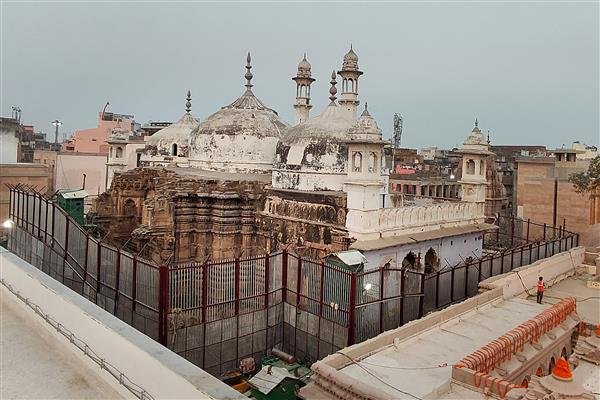In a significant development in the Gyanvapi mosque complex dispute in Varanasi, the district court has decided to provide both litigants with the Archaeological Survey of India (ASI) survey report. This move comes as the latest chapter in a long-standing legal battle between Hindu and Muslim communities over the ownership and history of the religious site.
Advocate Vishnu Shankar Jain, representing the Hindu side, expressed confidence in the conclusive findings of the ASI survey. According to Jain, the survey affirms the presence of a substantial Hindu temple that predates the construction of the existing structure at the Gyanvapi mosque complex.
The ASI report, as disclosed by ANI, unveils intriguing insights into the historical structures within the complex. It suggests that a pre-existing structure appeared to have been dismantled in the 17th century, with a part of it modified and reused. The scientific studies referenced in the report indicate the existence of a large Hindu temple before the construction of the current mosque.
Moreover, the report notes an Arabic-Persian inscription inside a room, dating the mosque’s construction to the 20th regnal year of Aurangzeb (1676-77 CE). This revelation leads to the conclusion that the pre-existing structure was likely destroyed during the reign of Aurangzeb, and part of it was modified and reused in the current mosque.
The Varanasi court, under the jurisdiction of District Judge A K Vishvesh, has ruled that the ASI survey report will be made accessible to both the Hindu and Muslim parties involved in the dispute. This decision is a crucial step in ensuring transparency and providing all concerned parties with the opportunity to examine the archaeological findings.
The ASI report also emphasizes that the western wall of the current structure represents the remaining section of a ‘pre-existing Hindu temple.’ Elements of the pre-existing temple, such as pillars and pilasters, were repurposed with minor alterations during the expansion of the mosque and the creation of the ‘sahan.’
In the eastern section of the mosque, cellars were constructed to expand the available space, and a sizable platform was created to accommodate large congregations for prayers. The report details how pillars from previous temples were repurposed during the construction of cellars in the eastern part of the platform.
One notable discovery mentioned in the report is a pillar adorned with bells, niches for placing lamps on all sides, and featuring an inscription from Samvat 1669. This pillar was reused in cellar N2. Additionally, the report highlights the discovery of sculptures depicting Hindu deities and carved architectural elements buried beneath the deposited soil in cellar S2.
A total of 34 inscriptions were recorded during the survey, featuring scripts such as Devanagari, Grantha, Telugu, and Kannada. These inscriptions are on the stones of the pre-existing Hindu temples, which were re-used during the construction or repair of the existing mosque.
This development comes after the Supreme Court approved a request from Hindu women petitioners to cleanse the entire ‘wazukhana’ area within the Gyanvapi mosque. This area, where an alleged ‘Shivling’ was discovered, became a focal point in the legal proceedings.
The Gyanvapi mosque complex dispute has a long history, with both Hindu and Muslim communities asserting their claims over the religious site. The ASI survey report, with its archaeological findings, adds a new dimension to the ongoing legal and religious discussions surrounding the Gyanvapi mosque in Varanasi. As the court proceedings continue, the revelations from the ASI report will likely influence the narratives presented by both sides in this complex and sensitive dispute.
